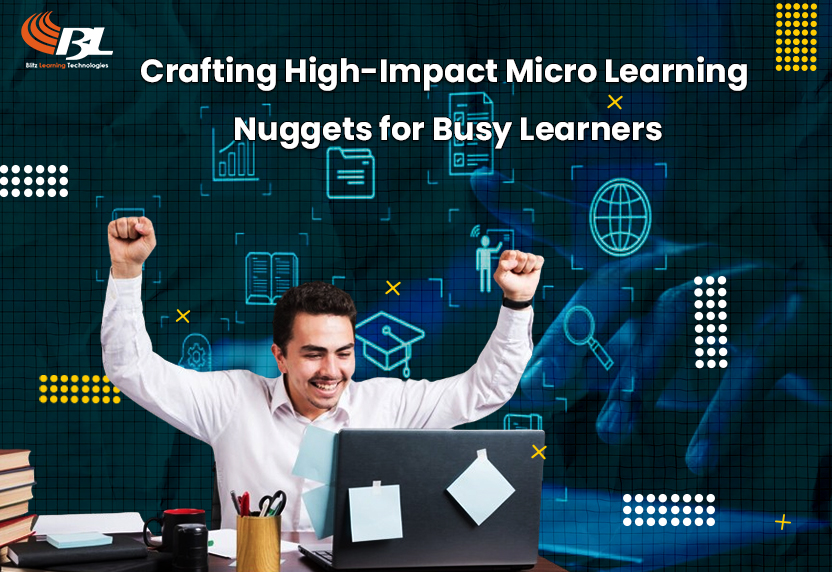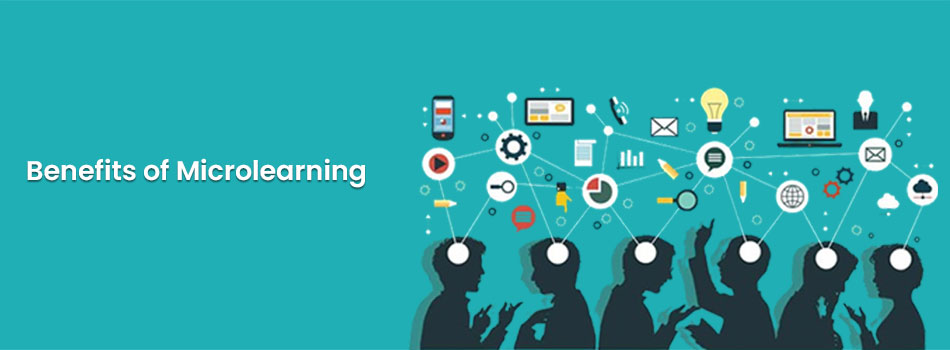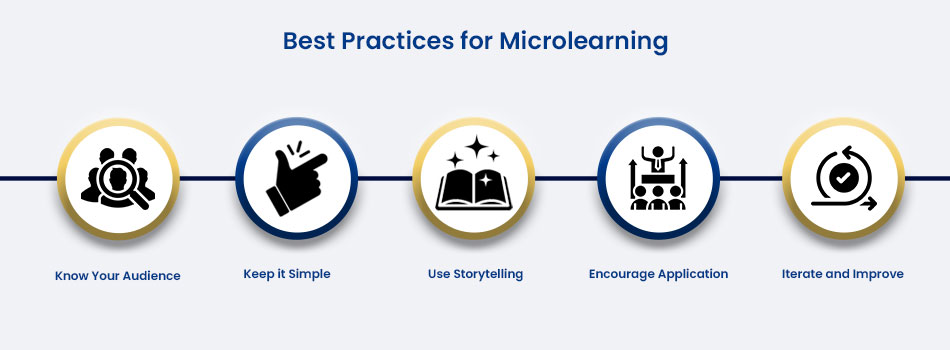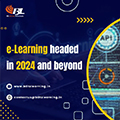
Blog
- Home
- Blog

30Apr
Crafting High-Impact Micro Learning Nuggets for Busy Learners
Introduction:
In today's fast-paced world, where time is a luxury, traditional methods of learning are undergoing a transformation. As attention spans shorten and schedules become busier, there's a growing demand for learning experiences that are quick, focused, and impactful. Enter microlearning, a revolutionary approach that delivers bite-sized nuggets of information tailored to the needs of busy learners. In this blog post, we'll explore the art of crafting high-impact microlearning nuggets that engage and empower learners to achieve their goals efficiently.
Understanding microlearning:
Microlearning is a custom eLearning strategy that breaks down complex concepts into small, easily digestible chunks of information. Unlike traditional long-form courses, microlearning focuses on delivering targeted content that can be consumed in short bursts. These bite-sized lessons are designed to cater to the busy lifestyles of modern learners, allowing them to learn on the go and at their own pace.
Benefits of microlearning:

The rise of microlearning can be attributed to its numerous benefits for both learners and educators. For learners, microlearning offers:
Flexibility: Microlearning allows learners to access content anytime, anywhere, making it convenient for individuals with busy schedules.
Engagement: By delivering content in short, focused bursts, microlearning keeps learners engaged and prevents cognitive overload.
Retention: Research suggests that spaced repetition, a key component of microlearning, enhances information retention and reinforces learning over time.
For educators, microlearning offers:
Scalability: Microlearning enables educators to create and distribute content quickly and cost-effectively, making it ideal for large-scale training initiatives.
Personalization: Microlearning allows educators to tailor content to the specific needs and preferences of individual learners, leading to a more personalized learning experience.
Analytics: Microlearning platforms often come equipped with robust analytics tools that provide insights into learner progress and engagement, allowing educators to track performance and make data-driven decisions.
Key elements of high-impact microlearning nuggets:
Crafting effective microlearning nuggets requires careful attention to detail and a focus on key elements that maximize impact. Here are some essential components to consider:
Clear learning objectives: Each microlearning nugget should have a clear and specific learning objective. This ensures that learners know what to expect and can assess their progress upon completion.
Relevance: Content should be relevant and directly applicable to learners' goals and objectives. By addressing specific pain points or challenges, microlearning nuggets become more meaningful and engaging.
Conciseness: The essence of microlearning lies in its brevity. Keep content concise and to the point, focusing on delivering the most essential information without unnecessary fluff or filler.
Interactive elements: Incorporating interactive elements such as quizzes, simulations, or branching scenarios can enhance engagement and reinforce learning outcomes.
Multimedia integration: Utilize a variety of multimedia elements, including videos, infographics, and animations, to cater to different learning preferences and enhance comprehension.
Mobile optimization: Ensure that microlearning content is optimized for mobile devices, allowing learners to access it on the go and seamlessly integrate learning into their daily routines.
Assessment and feedback: Provide opportunities for learners to assess their understanding through quizzes or assessments, and offer timely feedback to reinforce learning and address any misconceptions.

Best practices for developing microlearning content:
Creating high-impact microlearning content requires a strategic approach and adherence to best practices. Here are some tips for developing effective microlearning nuggets:
Know Your Audience: Understand the needs, preferences, and learning styles of your target audience to create content that resonates with them.
Keep it simple: Focus on one key concept or skill per microlearning nugget to avoid overwhelming learners with too much information at once.
Use storytelling: Incorporate storytelling elements to make content more relatable and memorable, helping learners connect with the material on a deeper level.
Encourage application: Provide opportunities for learners to apply newly acquired knowledge or skills in real-world scenarios, fostering deeper understanding and retention.
Iterate and Improve: Continuously gather feedback from learners and analyse performance data to identify areas for improvement and refine your eLearning development content over time.

Conclusion:
In an era defined by constant distractions and time constraints, microlearning have emerged as a powerful tool for delivering targeted, high-impact learning experiences. By breaking down complex concepts into bite-sized nuggets of information, microlearning caters to the needs of busy learners and provides a flexible and engaging alternative to traditional forms of education. By following best practices and incorporating key elements such as clear learning objectives, relevance, and interactivity, educators can create microlearning content that empowers learners to achieve their goals efficiently and effectively. As the demand for flexible and accessible learning solutions continues to grow, microlearning is poised to play an increasingly important role in shaping the future of education and training.

Neha Tyagi
About authorAs a Digital Tech professional with significant experience, Neha Tyagi has mastered the art of teamwork. Throughout her career, she maintains a commitment to continuous learning. Currently, Neha is delving into innovative technologies aimed at transforming businesses.



Leave a comments